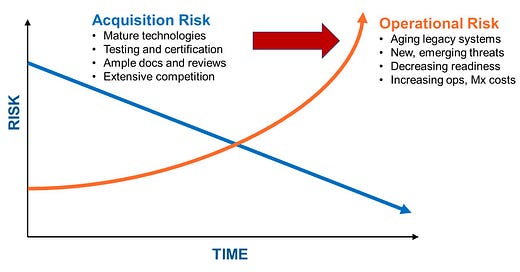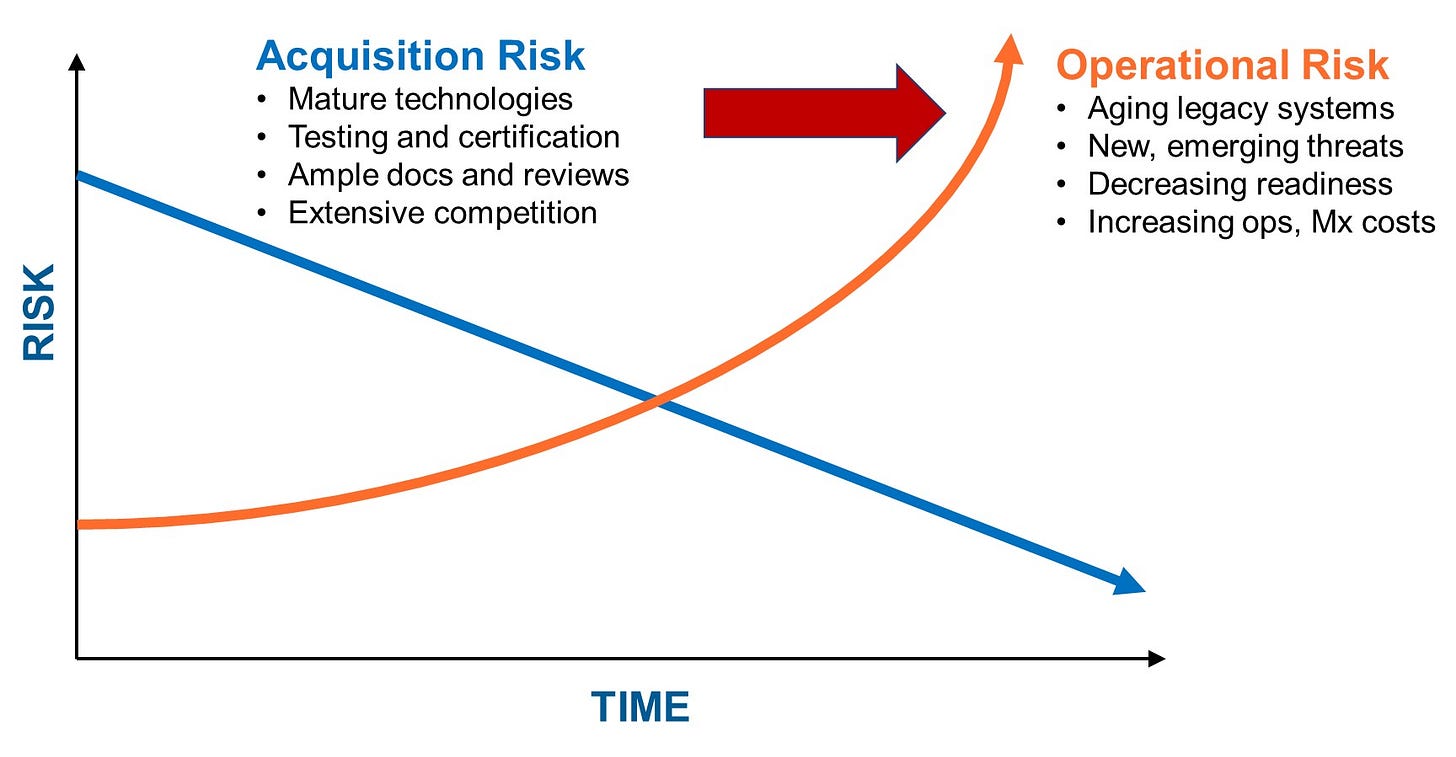“If you want it done right, you have to take your time.”
That was a former acquisition executive at a major conference where nearly every other speaker called for greater speed of delivery.
Acquisition professionals regularly seek to burn down risk on their programs. Risk management is a key element of sound program management. However, the current bureaucratic environment requires programs to:
Do extensive analysis of requirements, alternatives, designs, costs, and more.
Write dozens of program strategy documents and coordinate them through dozens of oversight and functional organizations.
Spend a year or more selecting the right prime contractor.
Regular reporting and reviews to track progress, issues, and performance against their constrained acquisition program baseline.
Have independent testers and certifiers spend a year to ensure the system meets the requirements defined a decade earlier.
What is often overlooked is …
Every month spent reducing acquisition risk, transfers the risk to operations.
Warfighters are operating with 30-year old legacy systems. Delays to modernization programs require them to extend the lives of antiquated systems that much longer. There’s only so much duct tape left in the department. They are operating with an increased array of threats, decreasing readiness of major weapon systems, a high OPTEMPO even in peacetime, and increasing operations and maintenance costs.
DoD programs must continue to focus on speed of delivery. This doesn’t mean foolish haste like “we’re going to skip all testing because we’re already late enough.” There are foundational elements to ensure you’re developing the right thing and developing the thing right. However, DoD programs can:
Deliver interim strategies and solutions whenever practicable and iterate.
Balance speed with rigor based on the size, risks, and operational environment.
Continuously lean out processes across requirements, budgets, and acquisition.
Every month spent on another review or another document is another month putting our Warfighters at risk. Remember, the Davidson window opens in 11 months.




